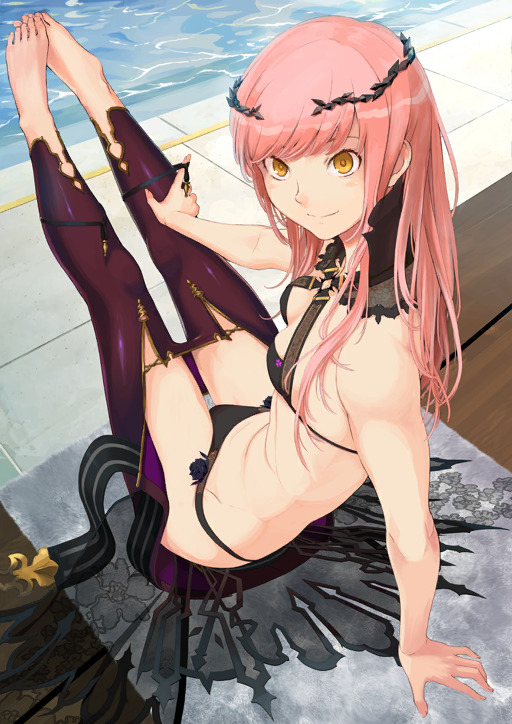#Cnoc na Riabh Yaraan-Doo
Explore tagged Tumblr posts
Text


Foreigner class Cnoc na Riabh Yaraan-Doo (Knocknarea) for the Servant Summer Festival 2023 in Fate Grand Order.
Illustrator: Takayama Kisai.
#Cnoc na Riabh Yaraan-Doo#knocknarea#foreigner#foreigner servant#foreigner class#game character#character design#fate character#character#fate go#fgo#fate grand order#fate series#fate#fate/ grand order#lasengle#typemoon#TYPE-MOON#art#official art#artist#official artist#illustrator#official illustrator#illustration#official illustration#game#mobile game#servant#game event
35 notes
·
View notes
Note
I saw that Knocknarea's actual name is "Yaraan-doo", but who is that? I tried looking it up but can't find anything remotely relevant.
Yaraan-doo is the Aboriginal version of the Southern Cross. Here's a source.
The implication with Yaraan-doo is that this version of Cnoc na Riabh is classed Foreigner because she comes from an unknowable world very far beyond the realm of human comprehension: Australia.
125 notes
·
View notes
Note
What is your opinion on Cnoc na Riabh being Yaraan-doo also?
I haven’t read much, but from my understanding, it makes sense she’s third in line, born from Cnoc na Riabh, the name of Medb’s grave. I’ve been wanting to know how the faeries are born from each other for years, so it’s nice to finally get a little glimpse of that.
Yaraan is also the tree where the first human died, paralleling with Mab’s lover being a human who died. It was taken by Yowi to be lifted into the Milky Way, adding to the foreigner concept. The place the tree used to be was known as Yaraan-doo from then on. Death was essentially alien to earth prior, so nature lamented over it becoming a permanent concept.
I found it a really lovely myth, especially because the first man died because he refused to kill an animal. Just like the LB fae are all softer than Medb, as they are born into a life not really knowing what death is until it occurs and literally changes them. It’s a sort of naïveté that can only come from someone born amongst fae and not humans, so they’re more vulnerable and more easily shocked when they, harbingers of death, are exposed to the very nature of their birthright
And it started with Cnoc because Mab was initially fine keeping human slaves. She took on a human lover, but the second that human died, death was brought to her. So her next life, Cnoc hated humans because she herself introduced them to it. In her third life, Yaraan-doo doesn’t consider herself a warrior at all apparently.
I think this is one main factor of why Medb was more of an actual warrior to them. She’s got a human trait (though we have no idea how she was born, she only mentions that she’s got fae blood), so I think her being more aware of what it means for a person to die makes her more resilient to want to fight to live.
But
If she’s actually Cnoc na Riabh, it’s way funnier because she’s just a foreigner possessed by the alien known as Australia (Hell)
#magical college girl medb#cnoc na riabh#yaraan doo#queen medb#fgo#fgo spoilers#fate grand order#i just woke up#so hope it all makes sense#they’re all very romantic tragedies of death and what it means to be alive
48 notes
·
View notes
Text


4★ Cnoc na Riabh Yaraan-doo (Foreigner)
78 notes
·
View notes
Text


4* Foreigner Yaraan-doo/Cnoc na Riabh ascensions
106 notes
·
View notes
Text
There's been an announcement for the upcoming CBC event. It's locked behind OC3 and the following have an event bonus:
Saber: Jason and Sétanta
Archer: James Moriarty
Assassin: Okada Izo
Berserker: Duryodhana
Other male and gender unknown Servants
Also, the 10th Evocation Festival is here, with the following welfares being made available: Paul Bunyan, Santa Martha, Iyo, and Cnoc na Riabh Yaraan-doo. Unfortunately, no one has received a buff.
0 notes
Text
When the Mab fae line is reborn, they legally have to change nationalities so they can spread their reign
Missy Worldwide
#magical college girl medb#cnoc na riabh#yaraan-doo#fgo spoilers#fgo#fate grand order#this will make sense in 2 years
21 notes
·
View notes